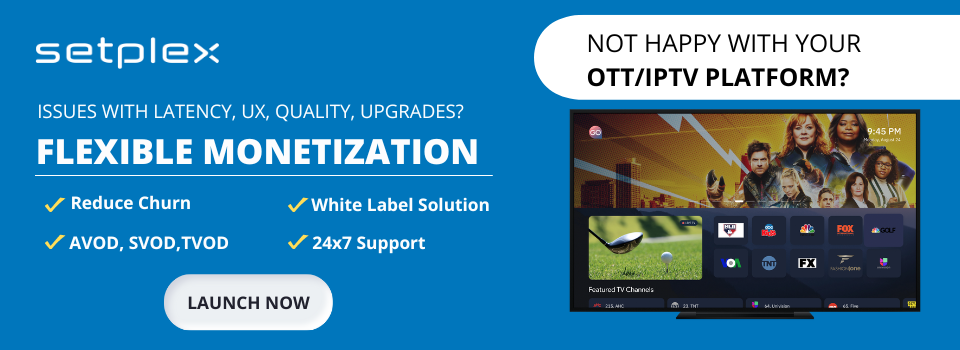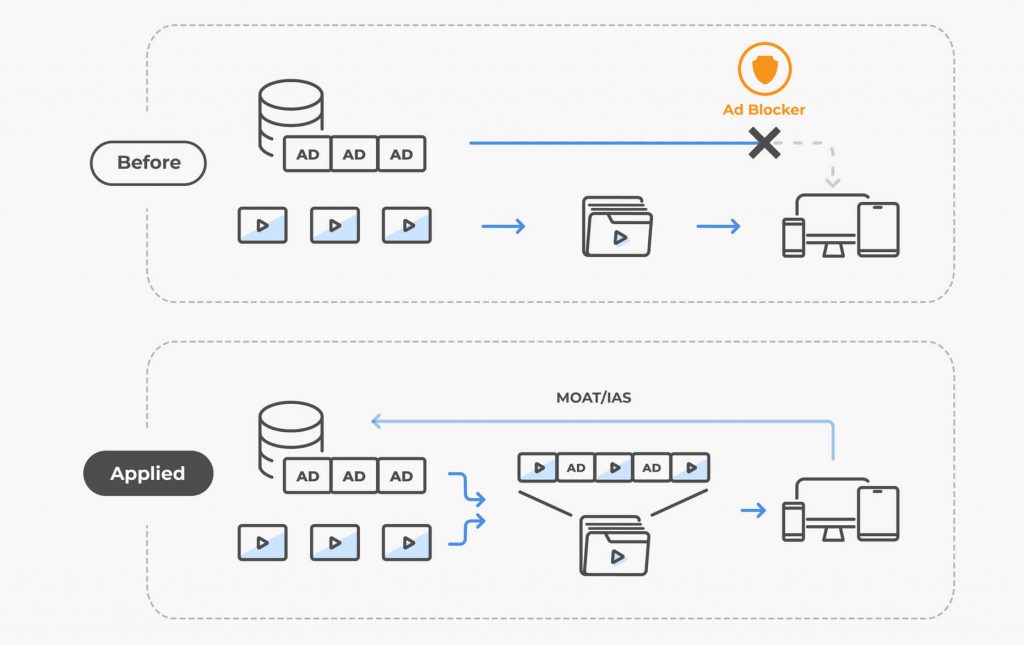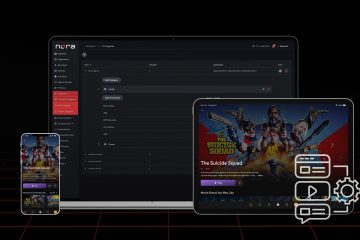Table of Contents
- What is SSAI?
- Why is SSAI important?
- Client-Side doesn’t work
- SSAI works where client side doesn’t
- SSAI for VOD
- SSAI for Live TV
- In Conclusion
There are two primary challenges that surround AVOD monetization. Deploying SSAI in a way that is scalable, robust, and flexible is a tall order. The other challenge is monetizing your inventory to maximize revenue. Part 1 (this article) of this SSAI 2-part series will be a primer on SSAI, whereas Part 2 will address monetization.
What is SSAI?
SSAI (Server Side Ad Insertion) enables streaming companies to monetize video with video ads that are stitched into the video at runtime by manipulating the video manifold of each viewer so that potentially each viewer gets a unique ad that is targeted to them based on device, location and content. Video is made up of chunks (groups of frames), and these chunks coordinate with SSAI to seamlessly deliver video ads in video players on the server side.

Why is SSAI important?
SSAI is important because it allows for a broadcast quality like experience. It removes the ability for ads to be blocked, and is a highly scalable solution to monetize live video as well as video on demand (VOD).
Client-Side doesn’t work
The trend for monetizing video content for both live and video on demand involves implementing server side ad insertion (SSAI). Traditionally, video ads have been served on the client side in the player. This type of deployment creates lots of issues including ad blockers that block ads from displaying. There are synchronization issues for live TV as well.

SSAI works where client side doesn’t
SSAI removes the ad blockers, improves live TV ad insertion capability, and replaces broadcast TV ads with dynamic targeted ads. Ads typically come in 2 minute blocks, and 12 minutes per hour of ads are broadcast standard.
SSAI allows you to target users with dynamic ads (dynamic ad insertion or DAI). With a cookieless world, you lose a lot of user data, so SSAI takes the IP address, device and the content and feeds this information to the ad server so targeted ads can be stitched into the individual users stream at runtime by manipulating the player manifest. In short, dynamic targeted ads allow a viewer in California on a SmartTV to get a convertible car ad, and a user in Vermont on a mobile phone might get a coffee ad.
The ad server gets a request from the SSAI that a 2 minute ad block is coming up and the ad server provides the ad creative to the SSAI server. Note that ad creative needs to match the video bit rate so if you are streaming in 4k, an HD ad will look odd.
SSAI for VOD

SSAI for VOD requires a bit more technical involvement on the player side. When a VOD asset is clicked on, the SSAI will call a video ad from the ad server. Any programmatic advertiser wants to know the ad was viewed by the user. The advertisers typically need a beacon to fire off from the player that tells the ad server (and the advertiser) that the ad has a player. Beacons get fired every 5 seconds so it is known the ad has been viewed. This typically requires an SDK to be installed on the player.
If you are doing mid-roll, the SSAI server needs instructions at what intervals to stitch in the ads. This can be accomplished by adding SCTE 35 (Society of Cable and Telecommunications Engineers) messages to the VOD files, or utilizing VMAP, which is a file that details how many midroll ads and at what time increments are stitched.
SSAI for Live TV
For live TV, the technical side starts with the insertion of SCTE 35 markers in the live stream. If you are downlinking live TV from satellite, the SCTE markers are typically removed, so that is an issue.
There are technologies that can detect broadcast ads in live TV, and will insert SCTE markers so SSAI services can replace those ads.
In Conclusion:
- Monetization of video ad inventory is still highly dependent on the region (for instance the US market is much more mature than Latin America).
- SSAI solves a lot of issues in terms of ad blocking and device support.
- More and more publishers are embracing SSAI and this will continue to grow and mature. Publishers are still challenged by low CPM ‘s and fill rates.
- Verifying users via registration and transparency of the content will improve pricing and fill rates.
- In general SSAI is a technology that will improve video ad monetization.
Interested in our IPTV and OTT services?



2 Comments
Veronica · September 11, 2021 at 5:33 am
I think ssai is a brilliant technology. Thanks for the post
John · October 3, 2022 at 4:00 pm
ssai is a tricky subject for me
Marc, thank you for explaining so clearly